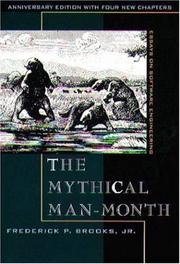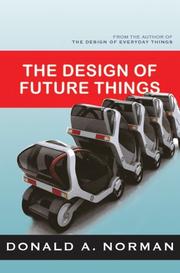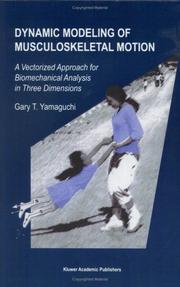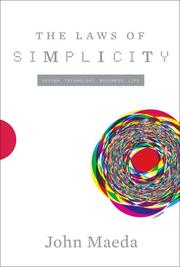| Listing 1 - 10 of 58 | << page >> |
Sort by
|
Book
ISBN: 9781032405681 Year: 2023 Publisher: Routledge
Abstract | Keywords | Export | Availability | Bookmark
 Loading...
Loading...Choose an application
- Reference Manager
- EndNote
- RefWorks (Direct export to RefWorks)
This book provides a fresh perspective on recent debates around integrating STEAM (Science, Technology, Engineering, Arts, and Mathematics) education in early childhood.The book offers inspiration and practical advice for educators and researchers. It suggests concrete ways to engage young children in STEAM learning activities and promote their development. With contributions from international experts, the book discusses how to develop age-appropriate STEAM learning activities for young children. Divided into four parts, the book covers a wide range of topics, including the perceptions and practices of STEAM education among early childhood teachers in different countries, the use of new pedagogies and technologies to promote equitable and accessible STEAM education, the role of teacher education and policy in reducing inequality in STEAM education, and how early STEAM education can promote social change and achieve sustainable development goals. The book highlights the importance of STEAM education in providing young children with the necessary skills to create a more sustainable and equitable world. Overall, this book provides an important contribution to help critique and improve how early childhood educators view and practice STEAM education across cultures. It proposes ideas for achieving sustainable development goals through high-quality early STEAM education.The book appeals to early childhood educators and researchers, as it draws on cross-cultural viewpoints to critically examine how teachers understand and implement STEAM education across different cultures along with exploring how cultural values and goals shape early STEAM education.Bron: https://www.routledge.com/Science-Technology-Engineering-Arts-and-Mathematics-STEAM-Education-in-the-Early-Years-Achieving-the-Sustainable-Development-Goals/Yang-Kewalramani-Senthil/p/book/9781032405681
Book
ISBN: 9780137053469 0137053460 9780137035151 0137035152 Year: 2011 Publisher: Pearson Education
Abstract | Keywords | Export | Availability | Bookmark
 Loading...
Loading...Choose an application
- Reference Manager
- EndNote
- RefWorks (Direct export to RefWorks)
Programming --- software engineering --- systeemontwikkeling (informatica) --- Computer architecture. Operating systems --- 681.3*D2 --- softwareontwikkeling --- Software engineering: protection mechanisms; standards--See also {681.3*K63}; {681.3*K51} --- Software --- Software engineering. --- 681.3*D2 Software engineering: protection mechanisms; standards--See also {681.3*K63}; {681.3*K51} --- Software engineering --- Computer software engineering --- Engineering --- Verpleegkunde --- Informatica

ISBN: 0201835959 9780201835953 Year: 1995 Publisher: Boston (Mass.) Addison-Wesley Professional
Abstract | Keywords | Export | Availability | Bookmark
 Loading...
Loading...Choose an application
- Reference Manager
- EndNote
- RefWorks (Direct export to RefWorks)
Software engineering --- Software Engineering --- Software engineering. --- Computer. Automation --- 681.3*D2 --- Computer software engineering --- Engineering --- 681.3*D2 Software engineering: protection mechanisms; standards--See also {681.3*K63}; {681.3*K51} --- Software engineering: protection mechanisms; standards--See also {681.3*K63}; {681.3*K51} --- 005.1068 --- Génie logiciel --- Programmeren --- Monograph --- Kind

ISBN: 9780465002276 0465002277 9780465002283 0465002285 9786612460531 0465013031 0786744715 1282460536 Year: 2007 Publisher: New York Basic Books
Abstract | Keywords | Export | Availability | Bookmark
 Loading...
Loading...Choose an application
- Reference Manager
- EndNote
- RefWorks (Direct export to RefWorks)
In The Design of Future Things, best-selling author Donald A. Norman presents a revealing examination of smart technology, from smooth-talking GPS units to cantankerous refrigerators. Exploring the links between design and human psychology, he offers a consumer-oriented theory of natural human-machine interaction that can be put into practice by the engineers and industrial designers of tomorrow's thinking machines. A fascinating look at the perils and promise of the intelligent objects of the future, The Design of Future Things is a must-read for anyone interested in the dawn of a new era in technology.
Industrial design --- Human engineering --- Psychological aspects --- Human engineering. --- Psychological aspects. --- industrial design --- Product strategy --- Grafische vormgeving --- Design --- Trends --- Psychologie van de consument --- Design, Industrial --- Mechanical drawing --- New products --- Ergonomics --- Human factors in engineering design --- Bioengineering --- Environmental engineering --- Industrial engineering --- Human comfort --- Human-robot interaction --- Trend --- Consumentenpsychologie --- #SBIB:309H1730 --- Artificiële Intelligentie, knowledge engineering, --- Industrial design - Psychological aspects --- Design industriel --- Ergonomie --- Aspect psychologique

ISBN: 0792374304 0387287043 0387287507 9780792374305 Year: 2001 Publisher: Boston (Mass.) Kluwer Academic Publishers
Abstract | Keywords | Export | Availability | Bookmark
 Loading...
Loading...Choose an application
- Reference Manager
- EndNote
- RefWorks (Direct export to RefWorks)
Dynamic Modeling of Musculoskeletal Motion introduces biomechanists to modern methods of modeling and analyzing dynamic biomechanical systems in three dimensions. Using vector kinematics, the reader is taught a systematic method which significantly reduces the complexity of working with multiple, moving limb segments in three dimensions. Operations which usually require the application of differential calculus are replaced by simple algebraic formulae. To derive dynamical equations of motion, a practical introduction to Kane's Method is given. Kane's Method builds upon the foundation of vector kinematics and represents one of the most exciting theoretical developments of the modern era. Together, these techniques enable biomechanists to decipher and model living systems with great realism, efficiency and accuracy. Interwoven with the theoretical presentation are chapters and examples which highlight the subtle differences between inanimate linkages and the biomechanical systems we seek to understand.
Biomechanics --- Musculoskeletal system --- Mathematical models. --- Biomedical engineering. --- Mechanics. --- Vibration. --- Dynamical systems. --- Dynamics. --- Biomedical Engineering and Bioengineering. --- Classical Mechanics. --- Vibration, Dynamical Systems, Control. --- Dynamical systems --- Kinetics --- Mathematics --- Mechanics, Analytic --- Force and energy --- Mechanics --- Physics --- Statics --- Cycles --- Sound --- Classical mechanics --- Newtonian mechanics --- Dynamics --- Quantum theory --- Clinical engineering --- Medical engineering --- Bioengineering --- Biophysics --- Engineering --- Medicine --- Musculoskeletal system - Mathematical models. --- Biomechanics - Mathematical models. --- Spierstelsel --- Podologie

ISBN: 9780262134729 0262134721 9780262278874 0262278871 1429412925 9781429412926 1282098063 9781282098060 9786612098062 6612098066 Year: 2006 Publisher: Massachusetts The MIT Press
Abstract | Keywords | Export | Availability | Bookmark
 Loading...
Loading...Choose an application
- Reference Manager
- EndNote
- RefWorks (Direct export to RefWorks)
This title presents ten laws of simplicity for business, technology, and design that teach us how to need less but get more. Finally, we are learning that simplicity equals sanity. We're rebelling against technology that's too complicated, against DVD players with too many menus, and software accompanied by 75-megabyte "read me" manuals. The iPod's clean gadgetry has made simplicity hip. But sometimes we find ourselves caught up in the simplicity paradox: we want something that's simple and easy to use - but also does all the complex things we might ever want it to do. In "The Laws of Simplicity", John Maeda offers guidelines, ten laws for balancing simplicity and complexity in business, technology, and design - for needing less and actually getting more. Maeda - a professor in MIT's Media Lab and a world-renowned graphic designer - explores the question of how we can redefine the notion of "improved" so that it doesn't always mean something more, something added on. Maeda's first law of simplicity is "Reduce." It's not necessarily beneficial to add technology features just because we can. And the features that we do have must be organized (Law 2) in a sensible hierarchy so users aren't distracted by features and functions they don't need. But simplicity is not less just for the sake of less. Skip ahead to Law 9: "Failure: Accept the fact that some things can never be made simple." Maeda's concise guide to simplicity in the digital age shows us how this idea can be a cornerstone of organizations and their products - how it can drive both business and technology. We can learn to simplify without sacrificing comfort and meaning, and we can achieve the balance described in Law 10. This law, which Maeda calls "The One," tells us: "Simplicity is about subtracting the obvious, and adding the meaningful."
Systems engineering. --- Systems engineering --- 745.01 --- computers --- design --- eenentwintigste eeuw --- eenvoud --- grafische vormgeving --- nieuwe media --- productdesign --- productontwikkeling --- technologie --- Engineering systems --- System engineering --- Engineering --- Industrial engineering --- System analysis --- Design and construction --- Trendwatching --- 770.6 --- Maeda, John --- minimalisme --- vormgeven --- productdesign, filosofie, esthetiek en kritiek --- 766.07 --- Computerkunst ; technologie in de kunst --- Digitale grafische vormgevers ; 2006 ; John Maeda --- Digitale kunsten ; vrije en toegepaste ; theorie --- Maeda, John °1966 (°Seattle, Verenigde Staten)
Object
Publisher: Norfolk Ternat Learning Resources Baert
Abstract | Keywords | Export | Availability | Bookmark
 Loading...
Loading...Choose an application
- Reference Manager
- EndNote
- RefWorks (Direct export to RefWorks)
Technologische opvoeding --- Kleuteronderwijs --- Ontwikkelingsmateriaal --- Techniek (wetenschap) --- STEM (Science Technology Engineering Maths) --- Tandwiel
Book
ISBN: 9781408237649 Year: 2014 Publisher: Oxon Routledge
Abstract | Keywords | Export | Availability | Bookmark
 Loading...
Loading...Choose an application
- Reference Manager
- EndNote
- RefWorks (Direct export to RefWorks)
Wetenschap --- Wereldoriëntatie --- STEM (Science Technology Engineering Maths) --- Kleuteronderwijs --- Lager onderwijs --- Onderzoekend leren
Book
Year: 2008 Publisher: Berlin MBV Berlin
Abstract | Keywords | Export | Availability | Bookmark
 Loading...
Loading...Choose an application
- Reference Manager
- EndNote
- RefWorks (Direct export to RefWorks)
Wetenschap --- Technologische opvoeding --- Basisonderwijs --- Lager onderwijs --- Didactiek --- STEM (Science Technology Engineering Maths)
Digital
Year: 2008 Publisher: Berlin MBV Berlin
Abstract | Keywords | Export | Availability | Bookmark
 Loading...
Loading...Choose an application
- Reference Manager
- EndNote
- RefWorks (Direct export to RefWorks)
Wetenschap --- Technologische opvoeding --- Basisonderwijs --- Lager onderwijs --- Didactiek --- STEM (Science Technology Engineering Maths)
| Listing 1 - 10 of 58 | << page >> |
Sort by
|

 Search
Search Feedback
Feedback About
About Help
Help News
News